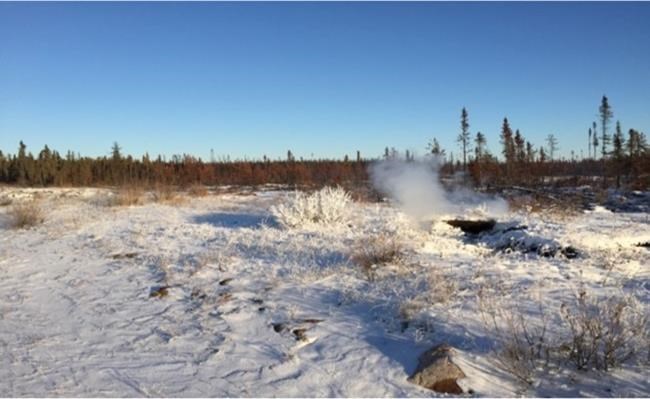VANCOUVER — Blazes that continue to burn through the winter in Canada were once thought to be a myth, but the so-called zombie fires may become more common as temperatures get warmer and less snow falls, experts say.
Steven Cumming, an associate professor at Laval University's department of wood and forest sciences, said those working in fire management had heard stories of the underground smouldering blazes over winter but there was no way of counting them until a recent study.
"All I know in Canada is that their existence has been reported more as a matter of folklore," he said in an interview. "And what this paper does is give us some idea how often these things might be happening."
The paper, published in the science journal Nature, said increasing summer temperatures associated with climate warming may promote the survival of overwintering fires in the future in the boreal regions. Blazes that burn over winter are also known as holdover or zombie fires.
Most of the fires are seen in the sub-Arctic, Arctic, Northwest Territories and the northern boreal forest in Ontario, Alberta and Saskatchewan, where peat is found in vast amounts, the report said.
The Fort McMurray fire in Alberta and several fires in Northwest Territories were considered zombie fires.
James Waddington, a professor at McMaster University's school of Earth, environment and society, said holdover fires come back to life from a previous season after smouldering under the snow.
"In some areas, a fire can come back to life and start being a flaming fire again," he said.
"So, the idea that because it can come back without a new ignition source burning and smouldering all winter, we call that a zombie fire. The term zombie fire is relatively new."
Hot summers lead to fires burning deeper in organic or peat soils, and are more likely to be detected the following spring, Waddington said.
"Perhaps they are becoming more common, but perhaps we're also getting a little bit better at, well, hunting them down, to use the zombie terms.
"I would say we're not at a stage of what I would call a zombie fire apocalypse, to use another zombie term, but I think it's important because the scientists found that it was linked to hot summers."
Mike Flannigan, a professor of wildland fire at the University of Alberta, said the holdover fires emit a lot more carbon on average than normal forest fires.
Peatlands are carbon reservoirs that have been building up over thousands of years, he said.
Burning one kilogram of peat emits about half a kilogram of carbon into that atmosphere, Flannigan noted.
"And the more carbon you have, the more warming you have, the more warming you have the more fire, so it's a cycle."
He said he would attribute most of the increase for the zombie fires, if not all, to a warming climate.
Canada is warming at twice the rate and the Arctic area is warming three times as fast as the rest of the world, Flannigan said.
"These fires that would normally have gone out in the winter or in the fall, burn right through until the following year," he said.
"So, warming will lead to more zombie fires because of warmer, drier winters and less snow."
This report by The Canadian Press was first published June 5, 2021.
Hina Alam, The Canadian Press



